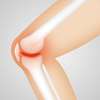Complete guide to TFL or wiper syndrome
The TFL (Fascia Lata Tension) syndrome, or iliotibial band syndrome, is a knee pathology that affects more than a quarter of athletes, especially runners and bikers.
In order to cure and prevent the possibility of aggravation and relapse, it is necessary to know about this syndrome.
Windshield wiper syndrome: what is it?
It is a tendonitis of the knee. It is called windshield wiper syndrome because it is the product of friction between the Fascia Lata tensor muscle of the knee and the external condyle of the femur, like the windshield wipers of a car.
How does it manifest itself?
- By a pain on the external part of the knee. Sometimes, it goes up along the side of the thigh.
- By a progressive pain, appearing according to the time or the distance covered. At the beginning, it always appears after a specific time, then as time goes by, it appears instantaneously, making any effort unbearable, even impossible.

What are the causes of this pathology?
Too much effort

For the majority of cases, it occurs when the individual returns to running too abruptly after several weeks or months of break. Then the aches and pains start and we tell ourselves that it is normal. And then it's back to more and more intense and rhythmic efforts. After a while, the knee suffers and you become unable to continue. Motivation is a good thing but be careful. There is no need to force it, it is recommended to go a little at a time, literally, as the expression goes "there is no point in running, you have to start at the right point".
Dehydration
Did you know that the human body is made up largely of liquid? Water is the most important element to ensure the proper functioning of our body. Therefore, it is important to always be hydrated, otherwise the risk of injury is increased (muscle soreness, rupture, TFL syndrome...). It is recommended to drink 1.5L of water per day and more when practicing sports activities.

Acidic foods

Food consumption should be monitored before practicing sports because a pH that is too acidic favors inflammation, which can lead to injuries. It is therefore advisable to favour the consumption of basic foods.
Inappropriate running shoes
When you walk or run, especially athletes, the comfort of your feet should not be neglected. Your feet can change shape or size if you lose weight, for example. Having good insoles also cushions your steps, keeps you balanced and ensures the proper mechanism of the TFL. Do not hesitate to consult a podiatrist or your osteopath for more details on this subject.

Knee dysfunction
When the knee is overstressed, the TFL experiences complications. There are many factors that can interfere with this mechanism and are sometimes caused by little things that we don't even think about. To determine the origin of this imbalance, it is recommended that an osteopath review the entire body mechanism. This is the only way to understand and prevent this misuse of the TFL.
How is TFL syndrome treated?
Resting

I am well aware that this option is far from being the favorite of athletes, personally I had a lot of trouble applying it. But I pushed myself so hard when I had a windshield wiper syndrome that I stopped running for 6 months.... So today, I can tell you that you should not neglect to rest well in order to treat ice wiper syndrome (iliotibial band syndrome) and prevent any recurrence.
Staying well hydrated
As mentioned above, the human body is largely made up of water. An individual loses an average of 2.5 liters of water during the course of a day compared to 3.5 liters for someone who practices sports. It is therefore essential to drink a lot of water to recover these losses and stay in shape. The water intake from food is about 1 liter, which is still not enough for a good hydration. On average, you should drink 1.5 liters of water per day, and 2.5 liters during sports. If you like running, hydrate well. It's an easy habit to adopt that many don't do.

Take alkalizing foods
An acidic diet promotes inflammation and increases the risk of injuries such as wiper syndrome. For a reasonable acidity of the pH, alkalizing foods are recommended.
Treatment by traditional medicine
To treat the tensor fascia lata syndrome, taking anti-inflammatory drugs is not a good remedy because the inflammation in this syndrome only occurs at the beginning, then it is a reshuffling of the tendon fibers, we speak then of tendinopathy and no longer of tendinitis.
The natural method
And yes! It is no longer a secret for anyone: the green clay poultice has many virtues! To cure windshield wiper syndrome, this natural remedy is highly recommended. Prepare a green clay paste and apply a generous layer on the knee. Then cover with cellophane tape and leave on for a good 3 hours. Repeat this procedure as many times as necessary until you notice an improvement (between 1 and several times a week).
Still as a natural treatment, opt for essential oils such as arnica or wintergreen. However, remember to follow the indications and dosage to the letter.

Installation of kinesio taping

Thanks to the properties of the colored bands, kinesio taping can help in cases of wiper syndrome. Whether during the treatment of the injury or when resuming running, the K-tape is of great help because it improves lymphatic drainage and supplements the tensor muscle of the fascina lama but also the fascina around it.
Massage and physiotherapy
The drainage of toxins can be done by means of a massage of the sore area. In addition, massage with essential oils also prevents fibrosis of the tendon. This act, although quite painful, is highly recommended. Preferably, ask someone else to massage the tendon. Otherwise, you can always do it yourself, starting from the lateral side towards the bottom of the thigh. Again, remember to ice the area after each massage.
Also, why not consult a physiotherapist? The advantage is that you will be in the hands of a professional. Indeed, he will not only know how to stabilize the mechanism of the iliotibial band, strengthen your muscles, adjust your knee, and also has specific devices for TFL syndrome such as shock waves.
Consult a podiatrist
Take care of your feet as well. On the one hand, pay attention to small dermatological conditions because they could get worse and cause a lot of discomfort. On the other hand, the feet support our body and it is important that it keeps its support and balance to prevent disorders related to the TFL syndrome. Your podiatrist, thanks to a podiatric assessment, will be able to advise you as well as possible on the type of shoes to use for the practice of sports but will be able, if and only if necessary, to make you orthopedic insoles in order to treat the imbalances of your feet likely to lead to a TFL syndrome.

Role of the osteopath

In osteopathy, the specialist will be able to diagnose the cause of the suffering of your iliotibial band. The windshield wiper syndrome will be treated with meticulousness because the osteopath has advanced techniques that are not limited to the knee. All parts of the body connected to this area will be studied, including the foot, ankle, hip, etc. The osteopath will also be able to help you by advising you on muscle strengthening, massages or by directing you to the appropriate specialist for further treatment.
